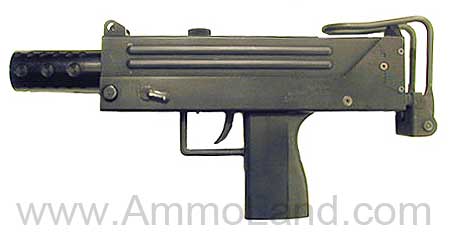Gun Collecting: Machine Guns That Don’t Fire


Michigan –-(Ammoland.com)- It might seem like a strange thing to buy; a machine gun that doesn’t actually shoot.
But for collectors this really isn’t such an odd thing. Consider that military airplanes in museums don’t exactly fly, and those tanks you’ll see outside National Guard posts aren’t going to be doing any fighting any time soon. So while it may seem like heresy to the faithful gun collector, one alternative when it comes to machine guns is actually getting one that is “non-gun” or “dummy gun.” But there is a lot more to it.
Actually until the last decade even machine guns that couldn’t fire had been strictly regulated in many states. However, the Bureau of Alcohol, Tobacco, Firearms and Explosives (ATF), now sees that the only part to be concerned with in a machine gun is the receiver. For a long time even non-operable machine guns had to be registered.
Today the rules have changed, and that “receiver” is the key to the puzzle.
These are built from what are called “parts kits,” and then assembled in a way to make the gun look complete, but still remain completely harmless as a firearm. These cannot fire or even chamber ammunition. The receiver, the portion of the gun that chambers and essentially operates the weapon, is replaced or cut. This renders the weapon inoperable, and for this reason ATF has no actual classification for dummy or non-guns, except to say what is not a gun.
The Gun Control Act of 1968 defines the term “firearm” to mean in part, “…any weapon (including a starter gun) which will or is designed to or may be readily converted to expel a projectile by the action of an explosive” or “the frame or receiver any such weapon.”
Furthermore, the National Firearms Act specifies that a “machinegun” is “…any weapon which shoots automatically more than one shot, without manual reloading, by a single function of the trigger…[and] the frame or receiver of any such weapon.”
The most important part regarding this matter is listed in the NFA as well in terms of how to create a proper non-gun:
“A machinegun receiver that has been properly destroyed may be used to assemble a ‘dummy gun’ that is not subject to the controls of the National Firearms Act or Gun Control Act. When sections of destroyed machinegun receivers are used to build a dummy gun and the severed sections welded back together, the dummy gun receiver must be at least one (1) inch shorter than the original machinegun receiver. The bolt, if present, must be welded to the receiver in the closed position. The breech of the barrel must be welded closed and an obstruction welded into the barrel. Alternatively, a solid metal/plastic bar in the same shape and configuration as the original model maybe used as a ‘dummy receiver.’”
Thus if the gun can’t fire or operate, it isn’t technically a machine gun in their eyes and is legal for ownership – but as always check the local laws. For example, dummy guns are still legal in California, but these require an orange plug at the end and the size of the magazine is restricted, while New York City has cracked down and banned anything that looks like a gun – including all toy guns. But if you can own these, the dummy guns make a good way of filing a hole in your collection.
Alex Cranmer, vice president of International Military Antiques (ima-usa.com) agrees that non-guns are a great way to round out a collection.
“You really can’t tell until you go to see if the action moves. What I like to say is that we’re selling Model T Fords with solid engine blocks. That’s the difference between replica guns and a display gun. The display is 90 percent original parts.”
One thing to keep in mind however is how the conversion was done. Some states have laws on modifying guns, this reporter has personally encountered a “non-gun” that probably would have been able to chamber and cycle rounds, thus it wasn’t really a “non-gun” after all. ATF can confirm if a firearm meets the criteria, but it will need to actually see the example.
While this might seem fairly complex, the best advice is to purchase any non-guns from a specialized and reputable dealer, rather than from an individual at a militaria show or online, unless you are certain the item meets the aforementioned standards. As previously mentioned you should check for local laws, and be sure to ask any sellers if they are familiar with the National Firearms Act or Gun Control Act. If they say “no” then they can’t possibly claim to be compliant to ATF standards. In those cases it is best to walk away from any potential transaction.
Alternatively some collectors opt to go a bit to rely on a modern-made display copies, and these similar to non-guns, except in that none of the parts are real, but from any distance they look good. Still many collectors prefer the machine guns where at least “most” of it was actually there.
However, the days of non-guns maybe coming to an end, at least in terms of availability. In 2005 a ban was been placed on the importation of these parts kits. Thus the items that are in the country are the last of the so-called “new” ones will be seeing. So get those machine guns anyway you can, and while you can.
Peter Suciu is executive editor of FirearmsTruth.com, a website that tracks and monitors media bias against guns and our Second Amendment rights. Visit: FirearmsTruth.com
